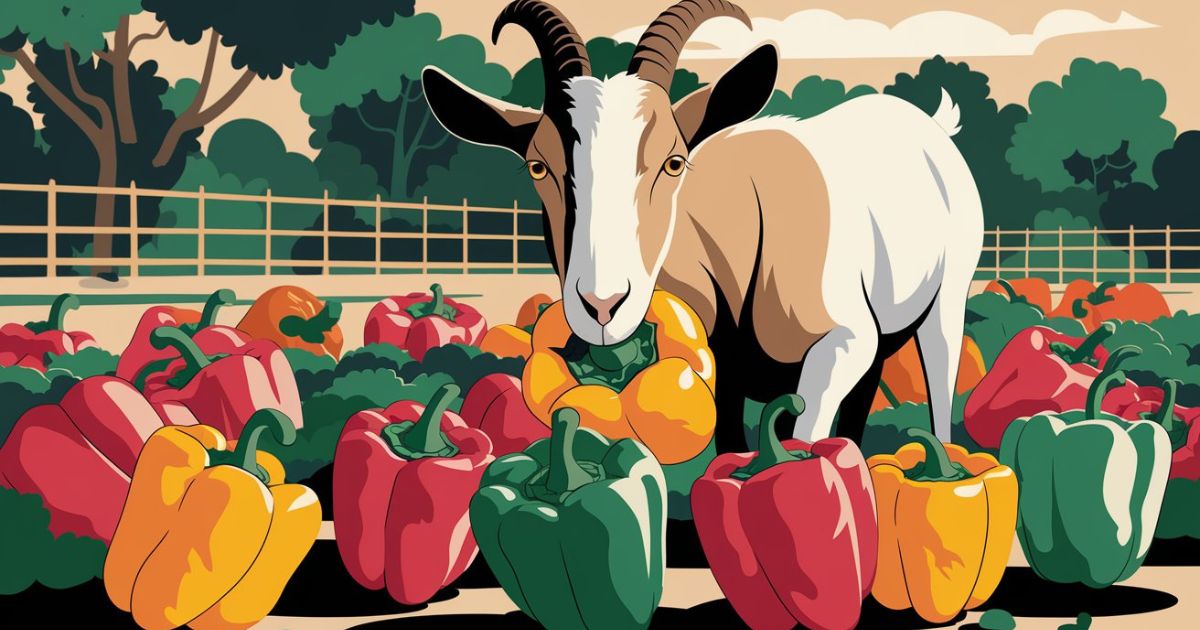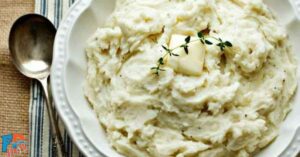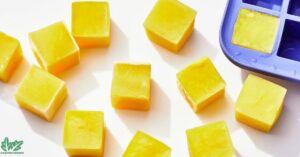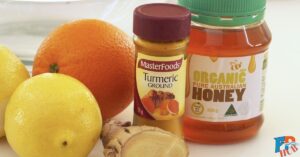Goats can eat bell peppers as part of their diet. These colorful veggies are safe and healthy for them. But can goats eat all types of bell peppers?
Curious about what treats are safe for your goats? Feeding them the right foods is important. Let’s explore whether bell peppers are a good choice for goats.
This guide will show you which bell peppers are best for goats. It covers the benefits and any risks. Find out how to treat your goats with tasty, colorful peppers.
Are Bell Peppers Safe for Goats?
When it comes to goat diet, many farmers and pet owners wonder about the safety of various foods. Bell peppers often raise questions, as these colorful vegetables are common in many gardens. The good news is that bell peppers are generally safe for goats to eat. These crunchy treats can be a delightful addition to a goat’s menu, offering both nutrition and variety.
As with any treat for goats, moderation is key. While bell peppers aren’t toxic, they shouldn’t replace the staples of a goat’s diet like hay and pasture. Goats have complex digestive systems designed for fibrous plant matter, so treats should only make up a small portion of their overall intake. By offering bell peppers as an occasional snack, you can provide your goats with a safe and enjoyable treat without compromising their nutritional needs.
READ MORE: Can Goats Eat Cucumbers? A Comprehensive Guide for Goat Owners
The Nutritional Value of Bell Peppers for Goats
Bell peppers are a nutritious and delicious addition to a goat’s diet. These colorful vegetables are rich in vitamins, minerals, and antioxidants that can contribute to the overall health of your goats. Among their many benefits, bell peppers are particularly high in Vitamin C, which supports immune health, and dietary fiber, which promotes good digestion. Adding bell peppers to their diet in moderation can be a great way to enhance your goat’s nutrition.
Nutritional Breakdown of Bell Peppers for Goats (Per 100g)
| Nutrient | Amount per 100g |
| Total Fat | 0.3g |
| Saturated Fat | 0.1g |
| Monounsaturated Fat | 0.1g |
| Total Carbohydrate | 18g |
| Dietary Fiber | 4.9g |
| Sugar | 5g |
| Protein | 1.2g |
| Vitamin C | 17mg |
| Potassium | 375mg |
| Magnesium | 29mg |
| Vitamin B-6 | 0.1mg |
| Iron | 0.6mg |
| Calcium | 36mg |
| Sodium | 10mg |
| Calories | 75 |
RELATED POST: Can Goats Eat Cucumbers? A Comprehensive Guide for Goat Owners
Key Benefits of Bell Peppers for Goats
- Immune System Support: The high levels of Vitamin C in bell peppers help to strengthen goats’ immune systems, making them less susceptible to illness.
- Rich in Fiber: Dietary fiber promotes healthy digestion, which is crucial for the well-being of goats, as they rely on a well-functioning digestive system to process their food.
- Low in Fat: Bell peppers are very low in fat, making them a healthy snack option for goats, especially when fed alongside other forage and roughage.
- Source of Vital Minerals: With minerals like potassium, magnesium, and iron, bell peppers can help with muscle function, circulation, and energy levels.
- Natural Sweetness: The natural sugar content in bell peppers makes them an appealing and tasty treat for goats without being unhealthy.
Can Goats Eat Different Types of Bell Peppers?
Goats can indeed enjoy a rainbow of bell pepper varieties. Each color offers slightly different nutritional benefits, making them excellent goat-safe snacks. Green peppers are typically less sweet and contain slightly fewer nutrients than their more colorful counterparts. Red, yellow, and orange peppers are sweeter and often have higher levels of certain vitamins.
It’s worth noting that while all bell peppers are safe for goats, individual preferences may vary. Some goats might show a preference for sweeter varieties, while others may enjoy the crunchier texture of green peppers. Offering a mix can provide both variety and a range of nutrients to support goat health and nutrition.
Goats and Green Bell Peppers
Green bell peppers are the unripe version of the fruit and tend to have a slightly bitter taste compared to their colored counterparts. Despite this, many goats still enjoy munching on green peppers. They’re lower in sugar content, which can be beneficial if you’re watching your goat’s sugar intake. Green peppers are also an excellent source of fiber, supporting healthy digestion in goats.
Goats and Red Bell Peppers
Red bell peppers for goats are often a favorite due to their sweeter taste. These peppers are fully ripe and contain the highest levels of nutrients among all bell pepper colors. They’re particularly rich in vitamin C and beta-carotene, which converts to vitamin A in the body. These nutrients can contribute to a healthy immune system and good eye health in goats.
Yellow and Orange Bell Peppers
Yellow and orange bell peppers fall between green and red in terms of ripeness and nutritional content. They offer a nice balance of sweetness and crunch that many goats find appealing. These colorful peppers are packed with antioxidants and can be a great way to add variety to your goat’s treat options.
Bell Pepper Parts (Seeds, Stems, Leaves)
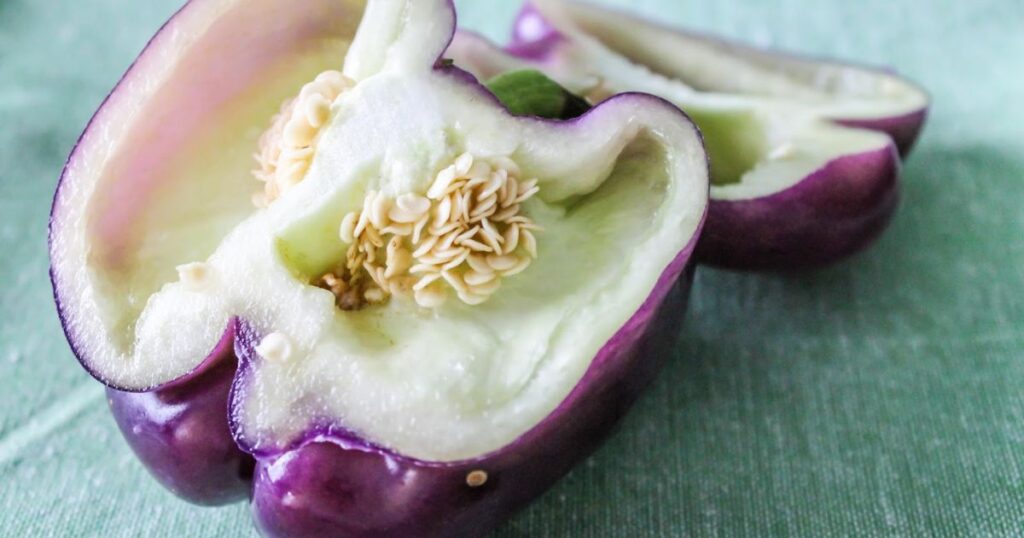
When feeding bell peppers to goats, it’s important to consider which parts are safe. The flesh of the pepper is perfectly fine and often the most enjoyable part for goats. Bell pepper seeds are also safe for goats to consume and can add a bit of texture to their snack. However, it’s best to remove the stem and any leaves before offering peppers to your goats.
While not toxic, bell pepper stems can be tough and woody, potentially causing choking or digestive discomfort. The leaves of bell pepper plants belong to the nightshade family and, while not as toxic as some other nightshade leaves, are best avoided. Stick to the colorful, fleshy part of the pepper and the seeds for the safest and most nutritious treat.
Tomatoes and Cucumbers with Bell Peppers
Diversifying your goat’s vegetable treats can be both fun and nutritious. Bell peppers pair well with other safe vegetables for goats like tomatoes and cucumbers. These combinations can offer a variety of textures and flavors that goats often enjoy. Tomatoes, like bell peppers, are part of the nightshade family but are safe for goats in moderation. Cucumbers provide a refreshing crunch and additional hydration.
When offering a mix of vegetables, remember to introduce new foods gradually. This allows you to monitor your goats for any adverse reactions and helps prevent digestive upset. A colorful mix of bell peppers, tomatoes, and cucumbers can provide a range of nutrients and keep your goats interested in their treats.
Bell Pepper Quantity
Determining the right amount of bell peppers to feed your goats is crucial for maintaining a balanced diet. While these vegetables are safe and nutritious, they should only make up a small portion of your goat’s overall food intake. A good rule of thumb is to limit treats, including bell peppers, to no more than 10-15% of your goat’s daily diet.
Factors such as the goat’s size, age, and overall health should be considered when deciding on portion sizes. For an average-sized adult goat, a few small pieces or about a quarter of a bell pepper a few times a week is generally sufficient. Always monitor your goats after introducing any new food and watch for signs of overfeeding, such as loose stools or decreased appetite for their regular feed.
Bell Peppers and Baby Goats
When it comes to baby goat diet, extra care must be taken. Young kids have delicate digestive systems that are still developing. In the early stages of life, their diet should consist primarily of milk, either from their mother or a suitable replacement. As they begin weaning baby goats, you can slowly introduce small amounts of solid foods.
For baby goats, it’s best to wait until they are at least 2-3 months old before offering bell peppers or other treats. Start with very small pieces and monitor their reaction closely. As with adult goats, moderation is key. Baby goats need a carefully balanced diet to support their growth, so treats should be limited and not interfere with their intake of essential nutrients from milk and eventually hay and grain.
Goats’ Preference for Bell Peppers
Goat preferences in food can vary widely, just like humans. Some goats may go crazy for bell peppers, while others might show less interest. Factors influencing a goat’s liking for bell peppers can include the pepper’s color, sweetness, and texture. Red bell peppers, being the sweetest, are often a favorite among goats with a sweet tooth.
If you’re introducing bell peppers to your goats for the first time, try offering small pieces of different colors to see which they prefer. Some goats might enjoy the crunchiness of fresh peppers, while others might prefer them slightly softened. That food preferences can change over time, so don’t be discouraged if your goats don’t take to bell peppers immediately. You can try mixing small pieces with their regular feed or other favorite treats to encourage them to give peppers a try.
How Much Bell Pepper Can a Goat Eat?
While bell peppers are a safe and nutritious treat for goats, it’s important to offer them in appropriate quantities. As a general guideline, treats like bell peppers should make up no more than 10-15% of a goat’s daily diet.
For an average-sized adult goat, this might translate to about a quarter to half of a bell pepper a few times a week. It’s crucial to remember that every goat is unique, and factors such as age, size, and overall health should be considered when determining portion sizes. Start with small amounts and gradually increase if your goat tolerates them well.
Always observe your goats after introducing any new food item to their diet. Signs of overfeeding might include digestive upset, decreased appetite for regular feed, or changes in stool consistency. If you notice any of these signs, reduce the amount of bell pepper or discontinue feeding it temporarily.
FAQs
Can goats eat bell peppers every day?
While bell peppers are safe for goats, it’s best to offer them as an occasional treat rather than a daily staple. Aim for 2-3 times a week to maintain variety in their diet.
Are bell pepper seeds safe for goats?
Bell pepper seeds are safe for goats to eat. They can add a bit of texture to the treat and are not harmful.
Which color of bell pepper is best for goats?
All colors of bell peppers are good for goats, but red peppers typically have the highest nutrient content. Offering a variety of colors provides different nutrients and flavors.
Can bell peppers cause digestive issues in goats?
When introduced gradually and fed in moderation, bell peppers shouldn’t cause digestive issues. However, overfeeding or sudden introduction might lead to loose stools.
How should I prepare bell peppers for my goats?
Wash the peppers thoroughly, remove the stem and leaves, and cut them into manageable pieces. You can offer them raw or slightly softened if your goats prefer.
Conclusion
Bell peppers can be a safe, nutritious, and enjoyable treat for goats when offered in moderation. These colorful vegetables provide a range of vitamins and minerals that can support your goat’s overall health.
From boosting the immune system to adding variety to their diet, bell peppers offer several benefits for your caprine companions. To introduce bell peppers gradually, especially for young or sensitive goats. Always remove stems and leaves, and consider offering a mix of colors to provide diverse nutrients.
While bell peppers can be a great addition to your goat’s treat rotation, they should never replace the core components of a goat’s diet – high-quality hay, pasture, and appropriate feed. By following these guidelines, you can safely incorporate bell peppers into your goats’ diet, adding a pop of color and nutrition to their menu.
